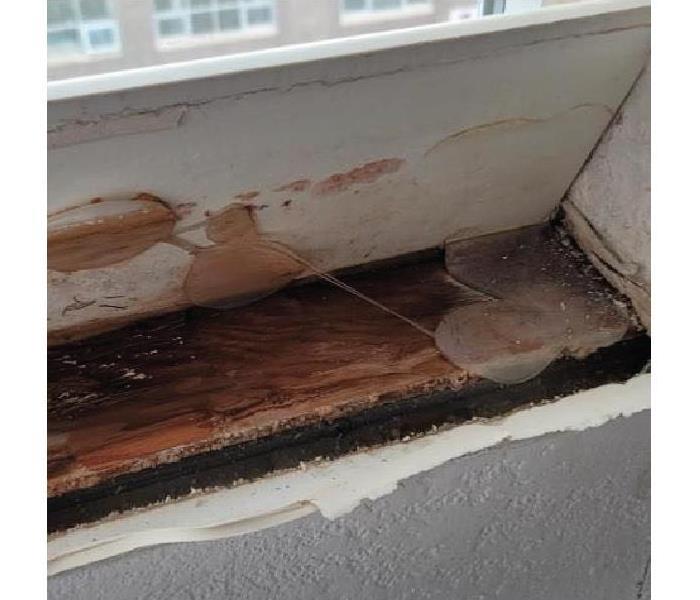Safeguarding Your Commercial Property: Addressing Mold After a Water Loss
5/3/2024 (Permalink)
Today, we're focusing on a particularly insidious consequence of water damage: mold growth. Mold can quickly colonize damp environments, posing health risks to occupants and causing further damage to your building's structure and contents. Understanding the importance of swift action and proper remediation measures is crucial for mitigating mold in commercial buildings after a water loss event.
Identifying Mold in Commercial Buildings: Water damage in commercial properties can stem from various sources, including burst pipes, roof leaks, flooding, or malfunctioning HVAC systems. Regardless of the cause, when water infiltrates your building, it creates the perfect conditions for mold growth. Mold can thrive on virtually any organic material, including drywall, wood, carpeting, and insulation. In commercial buildings, mold may lurk in hidden spaces such as wall cavities, ceiling voids, and HVAC ducts, making detection challenging without professional assistance.
Signs of Mold Infestation: Identifying mold in commercial buildings requires vigilance and attention to detail. Common signs of mold
infestation include:
Visible Mold Growth: Keep an eye out for any visible signs of mold growth on surfaces such as walls, ceilings, floors, and around plumbing fixtures.
Musty Odors: Mold often emits a distinct musty odor, which may indicate its presence even if no visible mold is apparent.
Water Stains: Stains on walls, ceilings, or floors may indicate past or present water intrusion, which can lead to mold growth if not properly addressed.
Allergic Reactions: Occupants experiencing allergic reactions such as sneezing, coughing, or skin irritation may be reacting to mold spores present in the indoor environment.
The Importance of Prompt Remediation: When mold is detected in a commercial building following a water loss event, swift action is essential to prevent further damage and mitigate health risks. SERVPRO of Downtown Minneapolis specializes in mold remediation for commercial properties, utilizing advanced techniques and equipment to address mold infestations safely and effectively.
Our Process:
Assessment: Our certified technicians conduct a thorough inspection of the property to identify the extent of the mold infestation and the underlying cause of moisture.
Containment: We establish containment barriers to prevent the spread of mold spores to unaffected areas of the building during remediation.
Remediation: Using state-of-the-art equipment and industry-approved techniques, we remove mold-infested materials, clean and sanitize affected surfaces, and treat the area to inhibit future mold growth.
Drying and Dehumidification: We employ professional-grade drying equipment to eliminate excess moisture from the environment, reducing the risk of mold recurrence.
Restoration: Once remediation is complete, we restore the affected areas to their preloss condition, ensuring minimal disruption to your business operations.
Don't let mold compromise the safety and integrity of your commercial property following a water loss event. With prompt action and professional remediation services from SERVPRO of Downtown Minneapolis, you can mitigate mold growth and restore your building to a clean and healthy environment for occupants and employees alike. Contact us today to learn more about our mold remediation services and how we can assist you in safeguarding your commercial property.




 24/7 Emergency Service
24/7 Emergency Service
